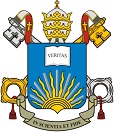| Compartilhamento |


|
Use este identificador para citar ou linkar para este item:
http://tede2.pucgoias.edu.br:8080/handle/tede/4158Registro completo de metadados
| Campo DC | Valor | Idioma |
|---|---|---|
| dc.creator | David, Luana Muzzi Vaz | - |
| dc.creator.Lattes | http://lattes.cnpq.br/1569564808433132 | eng |
| dc.contributor.advisor1 | Vieira, Maria Aparecida da Silva | - |
| dc.contributor.advisor1Lattes | http://lattes.cnpq.br/8025728342571136 | eng |
| dc.contributor.referee1 | Rocha, Maria José Pereira | - |
| dc.contributor.referee1Lattes | http://lattes.cnpq.br/9190041375160574 | eng |
| dc.contributor.referee2 | França, Divânia Dias da Silva | - |
| dc.contributor.referee2Lattes | http://lattes.cnpq.br/8409188374750691 | eng |
| dc.date.accessioned | 2019-04-09T14:30:05Z | - |
| dc.date.issued | 2017-03-27 | - |
| dc.identifier.citation | David, Luana Muzzi Vaz. Aspectos Epidemiológicos do Feminicídio no Município de Goiânia, Goiás. 2017. 84 f. Dissertação (Programa de Pós-Graduação STRICTO SENSU em Atenção à Saúde) - Pontifícia Universidade Católica de Goiás, Goiânia-GO. | eng |
| dc.identifier.uri | http://tede2.pucgoias.edu.br:8080/handle/tede/4158 | - |
| dc.description.resumo | A violência contra a mulher é considerada há anos um problema de saúde pública mundial, sendo a violência baseada no gênero sua principal causa. As agressões físicas, psicológicas e sexuais contra a mulher podem culminar em sua morte, geralmente por homicídio. O parceiro íntimo, na maioria das vezes, é seu principal agressor. O objetivo do presente estudo foi caracterizar os homicídios femininos, bem como descrever as características sociodemográficas das vítimas, da ocorrência dos homicídios e sua distribuição nos sete distritos sanitários do município de Goiânia, Goiás. Trata-se de um estudo descritivo, realizado com os dados registrados no Sistema de Informação de Mortalidade (SIM) entre 2008 e 2015. Foram identificados os distritos sanitários do município em que se concentraram os maiores números de ocorrência de homicídios femininos, com base na variável de local de moradia das vítimas. Os dados secundários foram coletados através do SIM, utilizando a classificação internacional de doenças, 10a revisão (CID-10) para a classificação dos feminicídios. Foram registrados 376 homicídios de mulheres entre 2008 e 2015 apresentando um aumento da sua proporção neste período de 8,2% em 2008 para 12,5% em 2015. A maioria das vítimas era mulheres jovens de 20 a 39 anos (57,5%), solteiras (78,8%), pardas (61,1%) e 58,4% tinham baixa escolaridade. Em relação ao meio de agressão, destaca-se o uso de armas de fogo (64,0%), seguido dos objetos penetrantes ou cortantes (25,3%). O local de ocorrência do óbito mais frequente foi a via pública (36,2%), destacando-se os meses de janeiro, abril e setembro, nos finais de semana. Os distritos sanitários onde mais ocorreram os óbitos femininos por agressão foram o Sudoeste (19,5%), seguidos do Campinas-Centro (17,3%) e Noroeste (16,7%). Assim, o perfil predominante das mulheres vítimas de feminicídio foi jovens, pardas, solteiras, com baixo nível de escolaridade e moradoras de regiões menos favorecidas do município. | eng |
| dc.description.abstract | Violence against women has been considered a world public health issue for years, and the gender-based violence is its leading cause. Physical, psychological, and sexual aggressions against women may end in their death, usually by homicide. The intimate partner is, most of the times, the main aggressor. The objective of this study was to characterize the homicides of women, as well as describe the sociodemographic traits of the victims, from the occurrence of the homicide to its distribution in the seven sanitary districts of the city of Goiânia, Goiás State. A descriptive study was carried out with the data recorded on the System of Information on Mortality (SIM) between 2008 and 2015. The sanitary districts of the city with the largest number of female homicide were identified based on the variable place of residence of the victims. The secondary data were collected through the SIM, using the International Classification of Diseases, 10th review (ICD-10), for the classification of the femicides. A total of 376 homicides of women were recorded between 2008 and 2015, presenting an increase in its proportion in this period from 8.2% in 2008 to 12.5% in 2015. Most of the victims were young women at 20-39 years of age (57.5%), who were single, brown (61.1%), and had low education level (58.4%). Regarding the aggression means, firearms (64.0%) followed by penetrating or cutting objects (25.3%) stood out. The more frequent site of death occurrence was the public road (36.2%); as for the time, the months of January, April, and September, in the weekends, stood out. The sanitary districts where more female death due to aggression took place were Southwest (19.5%), followed by Campinas-City Center (17.3%), and Northeast (16.7%). Therefore, the predominant profile of women, victims of femicide, was young, brown, single, with low education level, and resident of the poorest regions of the city. | eng |
| dc.description.provenance | Submitted by admin tede ([email protected]) on 2019-04-09T14:30:05Z No. of bitstreams: 1 Luana Muzzi Vaz David.pdf: 1135399 bytes, checksum: 4bf32c95db6c6b83dd34a6ea91bc8968 (MD5) | eng |
| dc.description.provenance | Made available in DSpace on 2019-04-09T14:30:05Z (GMT). No. of bitstreams: 1 Luana Muzzi Vaz David.pdf: 1135399 bytes, checksum: 4bf32c95db6c6b83dd34a6ea91bc8968 (MD5) Previous issue date: 2017-03-27 | eng |
| dc.format | application/pdf | * |
| dc.thumbnail.url | http://tede2.pucgoias.edu.br:8080/retrieve/13099/Luana%20Muzzi%20Vaz%20David.pdf.jpg | * |
| dc.language | por | eng |
| dc.publisher | Pontifícia Universidade Católica de Goiás | eng |
| dc.publisher.department | Escola de Ciências Sociais e Saúde::Curso de Enfermagem | eng |
| dc.publisher.country | Brasil | eng |
| dc.publisher.initials | PUC Goiás | eng |
| dc.publisher.program | Programa de Pós-Graduação STRICTO SENSU em Atenção à Saúde | eng |
| dc.rights | Acesso Aberto | |
| dc.subject | Violência de Gênero, Violência contra a Mulher, Homicídio, Violência. | por |
| dc.subject | Violence against women has been considered a world public health issue for years, and the gender-based violence is its leading cause. Physical, psychological, and sexual aggressions against women may end in their death, usually by homicide. The intimate partner is, most of the times, the main aggressor. The objective of this study was to characterize the homicides of women, as well as describe the sociodemographic traits of the victims, from the occurrence of the homicide to its distribution in the seven sanitary districts of the city of Goiânia, Goiás State. A descriptive study was carried out with the data recorded on the System of Information on Mortality (SIM) between 2008 and 2015. The sanitary districts of the city with the largest number of female homicide were identified based on the variable place of residence of the victims. The secondary data were collected through the SIM, using the International Classification of Diseases, 10th review (ICD-10), for the classification of the femicides. A total of 376 homicides of women were recorded between 2008 and 2015, presenting an increase in its proportion in this period from 8.2% in 2008 to 12.5% in 2015. Most of the victims were young women at 20-39 years of age (57.5%), who were single, brown (61.1%), and had low education level (58.4%). Regarding the aggression means, firearms (64.0%) followed by penetrating or cutting objects (25.3%) stood out. The more frequent site of death occurrence was the public road (36.2%); as for the time, the months of January, April, and September, in the weekends, stood out. The sanitary districts where more female death due to aggression took place were Southwest (19.5%), followed by Campinas-City Center (17.3%), and Northeast (16.7%). Therefore, the predominant profile of women, victims of femicide, was young, brown, single, with low education level, and resident of the poorest regions of the city. | eng |
| dc.subject.cnpq | CIENCIAS DA SAUDE::ENFERMAGEM | eng |
| dc.title | Aspectos Epidemiológicos do Feminicídio no Município de Goiânia, Goiás | eng |
| dc.title.alternative | Epidemiologic aspects of femicide in the city of Goiânia, Goiás State | eng |
| dc.type | Dissertação | eng |
| Aparece nas coleções: | Mestrado em Atenção à Saúde | |
Arquivos associados a este item:
| Arquivo | Descrição | Tamanho | Formato | |
|---|---|---|---|---|
| Luana Muzzi Vaz David.pdf | Texto Completo | 1,11 MB | Adobe PDF |  Baixar/Abrir Pré-Visualizar |
Os itens no repositório estão protegidos por copyright, com todos os direitos reservados, salvo quando é indicado o contrário.




